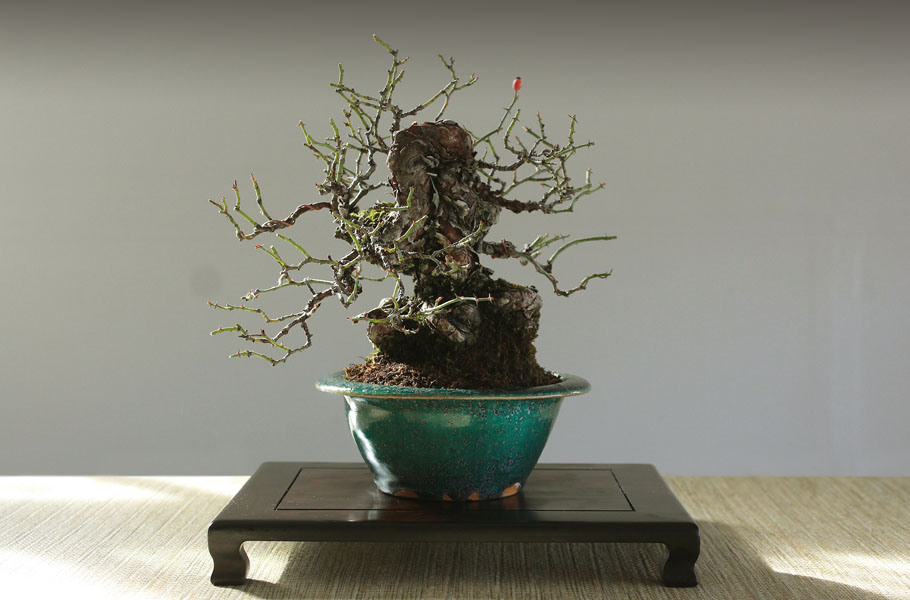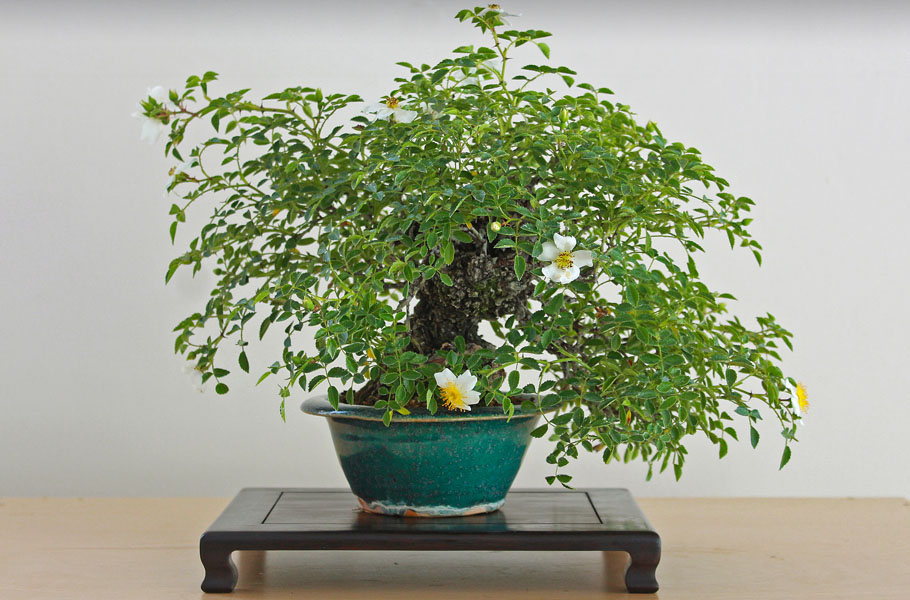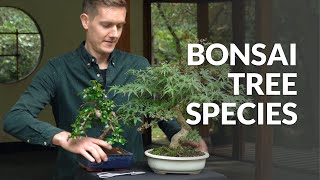Rose Bonsai Care guidelines
Roses like an airy place in full sun which is important for flower production. They are frost-hardy, but in a small bonsai pot it is wise to provide some protection in winter in a cool but frost-free place.
The rose needs a lot of water during the growing season when it is placed in full sun. Keep it slightly moist and don't let it dry out completely. It prefers neutral or slightly acidic water with a pH value between 6.5 and 7. Better use rain water if your tap water is very calcareous. Continue reading about watering Bonsai trees.
Watering
Free lecture from the Beginners CourseFertilize the tree once a month with solid organic fertilizer or use a liquid fertilizer every week during the growing season. If the leaves turn pale and chlorotic, use an extra iron fertilizer.
Prune the rose during dormancy, especially early spring is an ideal time, before the new buds swell. Let the shoots grow and the flowers develop. If you don't need the rose hips, trim back the shoots after flowering to keep the tree nice and compact and make it ramify. Sometimes branches can die for no apparent reason and new buds appear on old wood, which is typical for small shrubs like the rose. Young branches are easy to wire, but beware of the sharp spines. Older branches are quite stiff and brittle and should be positioned with great care. Continue reading about pruning Bonsai trees.
Repot younger trees every two to three years, older specimen less often, using a well-draining standard soil mixture with a pH value between 6.5 and 7. The roots of the rose take root-pruning well. Continue reading about repotting Bonsai trees.
Rose bonsai can be propagated from cuttings in summer. Use one year old shoots which have hardened off well. Air-layering is also possible. Rose cultivars from professional production are usually grafted.
Unfortunately, roses are often attacked by various pests and diseases. Aphids, spider mites, scale, Japanese beetles, sawfly, thrips, leaf cutter bees and rose midges are some of the insects which like to infest roses. Black spot, powdery mildew, stem cankers and botrytis blight are common fungal diseases which bother roses. Rose mosaic is a viral disease and crown canker is a bacterial disease which can sometimes occur. In all those cases identify the culprit precisely and use a specific pesticide or ask a professional gardener for help. For more detailed information on these techniques, check out our Bonsai tree care section.

Rose Bonsai (Rosa)

Flowering rose
General information about the Rose Bonsai tree
Although roses are normally small deciduous shrubs they can become nice bonsai trees with old trunks and rough bark. They have compound leaves and sharp spines. The first flowers appear in spring and some species can continue flowering until freezing temperatures in autumn make the plants go dormant. After a flower has wilted, the characteristic decorative fruit, the rose hip, develops. For bonsai, the wild roses or dwarf cultivars are best suited, with their smaller flowers and leaves and more delicate twigs and ramification. A few popular species include the rambling rose (Rosa banksiae alba), Rosa multiflora, Rosa Komachi and Rosa canina. If you need help identifying your tree, take a look at our Bonsai tree identification guide.





